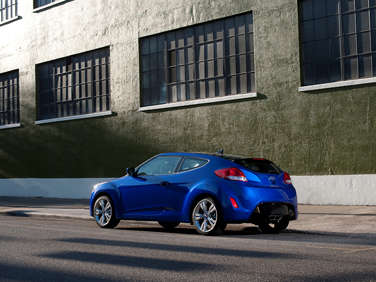Recent Articles
Popular Makes
Body Types
10 Things You Need To Know About the 2012 Hyundai Veloster

The 2012 Hyundai Veloster is a new and intriguing hatchback offering that aims to provide a heaping dose of style, fuel efficiency and features at a very low price. The entry-level Hyundai Veloster also comes with one of the most unique body styles currently available, as well as Hyundai's industry-leading warranty protection and a host of new technologies designed to squeeze as much performance and mileage as possible out of the diminutive hatchback.
Let's take a look at 10 things you need to know about the 2012 Hyundai Veloster.
01. The 2012 Hyundai Veloster Is All New
The 2012 Hyundai Veloster is a fresh face in the Korean brand's lineup. Although it makes use of the same basic platform as the popular Hyundai Elantra sedan, the Hyundai Veloster hatchback is considerably shorter in terms of wheelbase and overall length, nicely separating it from the Elantra in terms of appearance, maneuverability and functionality. The Veloster is also the sportiest hatchback available from Hyundai, slotting in above the capable Hyundai Accent and offering a performance-inspired option for budget-conscious new car buyers. Hyundai's goal with this automobile was to create a "do-anything" model that was practical, fuel efficient, and stylish all at the same time, giving the company a "one-two" punch behind the pricier Hyundai Genesis Coupe.
02. The 2012 Hyundai Veloster Is A 3-Door Hatchback
The 2012 Hyundai Veloster comes with an unusual 3-door hatchback design. Traditionally, the "third" door on this class of vehicle describes the rear cargo opening, but on the Veloster it actually refers to the fact that while the driver's side of the car has a single coupe-length door, the passenger side actually features a front and rear door to afford more convenient access to the back seat. This additional door, which is almost unnoticeable unless one is very close to the Veloster's body work, is certainly not a gimmick as it gives the hatchback a clear advantage for families loading children or groceries and eliminates the need to pop the front seat forward to enter or exit the automobile.
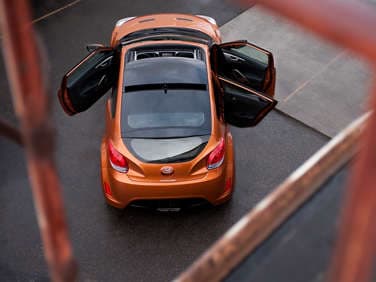
03. The 2012 Hyundai Veloster Features Aggressive Compact Car Styling
The 2012 Hyundai Veloster features what the automaker is calling "Fluidic Sculpture" styling, which draws heavily from the aerodynamic appearance of two-wheeled sport bikes. These cues can be seen most readily up front, where the Veloster's fascia offers detailed scoops carved along either side of its uniquely shaped grille. The Hyundai's long, swept headlight treatment also draws to mind a motorcycle and its rising belt line ties together the sport bike fairing look.
The Hyundai Veloster's unique hatch incorporates a deeply angled glass panel in order to offer improved visibility out of the rear and better illumination for rear seat passengers, and the roof is blacked out to provide the appearance of a full glass treatment. The rear bumper of the Veloster arcs over the vehicle's center-mounted dual exhaust tips in dramatic fashion.

04. The 2012 Hyundai Veloster Comes With Four-Cylinder Power
The 2012 Hyundai Veloster is motivated by a 1.6-liter, four-cylinder engine that can also claim "all-new" status. The automaker has outfitted the unit with direct-injection technology, which allows the Veloster to offer solid power without sacrificing fuel economy. The four-cylinder motor additionally incorporates dual continuously variable valve timing, a variable induction system and a low-friction drivetrain that all together help it to churn out 138 horsepower and 123 lb-ft of torque. Hyundai claims that with 86.3 horsepower per liter, the 1.6-liter mill found under the hood of the Veloster gives it the best specific output of any hatchback in its class.

05. The 2012 Hyundai Veloster Makes Two Gearbox Options Available
The 2012 Hyundai Veloster comes standard with a six-speed manual transmission, which allows drivers to bang through the gears as quickly as is humanly possible in their pursuit of performance. For those who are looking for a distinct speed advantage when it comes to shifting, the Veloster can also be ordered with a dual-clutch six-speed automated manual transmission. This gearbox was developed in-house by Hyundai and eliminates the torque converter typically found in an auto tranny in order to provide direct shifting capability and extremely rapid transitions from one cog to another. The dual-clutch gearbox is also much more efficient than a regular automatic in terms of fuel consumption, and it comes with both a full auto and a driver-controlled gear change mode.
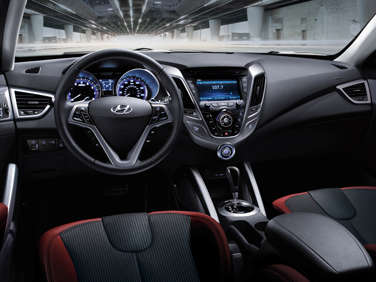
06. The 2012 Hyundai Veloster Offers Exceptional Fuel Mileage
The 2012 Hyundai Veloster's arresting looks don't offer any clues as to its frugal fuel consumption habits, but underneath its polished exterior lies one of the most thrifty-at-the-pump hatchbacks on the market. In stop and go driving the Hyundai Veloster returns a very healthy 28-mpg, and during highway cruising the compact car turns things up a notch to report 40-mpg, giving it a combined 32-mpg rating. When the Veloster is ordered with its optional dual-clutch automated manual transmission, the vehicle's engine and gearbox are optimized by an "Active Eco" mode which plays a large role in facilitating the Hyundai's gaudy EPA ratings.
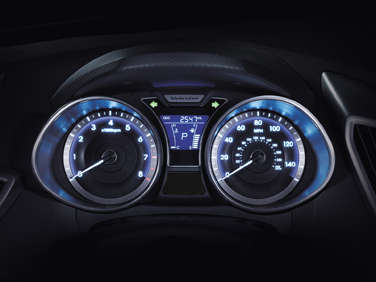
07. The 2012 Hyundai Veloster Provides An Engaging Driving Experience
The 2012 Hyundai Veloster might not be the most powerful automobile on the planet, but its suspension system has been tuned in order to provide the kind of fun and engaging ride that its compact dimensions, light weight and aggressive styling suggest. In addition to tightly controlled body movements (made possible by the inclusion of front and rear anti-swaybars, with the front unit thicker than that which is provided with the standard Elantra platform), the Veloster has been given a stiffer feel for American drivers than it offers in its home market of Korea. 18-inch wheels are available with the hatchback in order to provide additional grip, and a quick-ratio electric power steering system offers good feedback through the twisty bits.
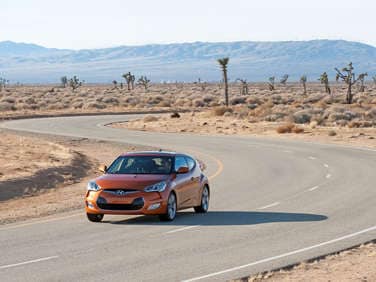
08. The 2012 Hyundai Veloster Offers A Long List of Standard Features
Hyundai is notorious for offering an extensive list of standard equipment even on its base model vehicles, and the 2012 Hyundai Veloster is no exception. All versions of the car feature Bluetooth integration, a seven-inch LCD touchscreen that is used to navigate the Veloster's entertainment system, an MP3-capable CD player and an Eco Scoring system which rates a driver's performance in terms of maximizing fuel mileage and minimizing tailpipe emissions. The Hyundai Blue Link system is also included free of charge, and it offers voice control over vehicle systems as well as the Blue Link Essentials package. The latter gives owners the ability to lock and unlock doors, activate the hatchback's horns or lights and perform vehicle diagnostics with their smart phone. Remote starting, voice text messaging and location sharing is also possible via Blue Link Essentials.
The Veloster can additionally be had with an optional navigation system, a rearview camera, Pandora internet radio, leather seats and a sunroof.
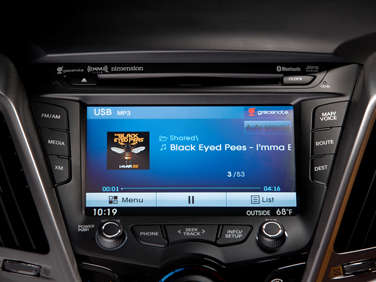
09. The 2012 Hyundai Veloster Comes With Top Level Safety Gear
The 2012 Hyundai Veloster's available Blue Link Assurance package comes with an emergency response feature that can automatically notify first responders in the event of an accident. An SOS button also provides a direct link to operators who can contact 911 services and link them to the vehicle's location. In addition to Blue Link Assurance, the Hyundai Veloster is outfitted with six airbags (dual front units, seat-mounted side airbags for the driver and front passenger and side curtain airbags that run the length of the vehicle's passenger compartment), as well as vehicle stability management, four-wheel anti-lock disc brakes and electronic stability control.

10. The 2012 Hyundai Veloster Is Very Affordable
The 2012 Hyundai Veloster just wouldn't be a Hyundai unless it also offered strong value as part of its overall appeal. The Hyundai Veloster offers a starting MSRP of $17,300 plus a $760 freight fee. This brings the cost of getting behind the wheel of the Veloster to $18,060, which is less expensive than similarly stylish competitors such as the Scion tC, the Honda CR-Z and the MINI Cooper. Throw in the fact that the Hyundai Veloster offers more interior volume than any vehicle in its class, a unique three-door setup and a surprising amount of standard gear for the price, and it's clear that the hatchback is a definite bargain.
